Monday, June 29th 2020

European Hardware Awards Announced; AMD CPU and GPU Division Wins Big
The European Hardware Association (EHA), comprised of the nine largest independent technology news and review websites on the continent, has announced its hardware winners for 2020. And AMD has completely blindsided its competition in all possible metrics, whether you're talking about the GPU or CPU side of the equation. AMD's CPU division has completely razed Intel's offerings when it comes to awards, with no Intel CPU even being credited with a single prize. AMD's Ryzen 3000 series won the most-desired award in the form of the "Product of the Year" award. The Ryzen 3000 chiplet design in itself won the EHA "Best Technology" Award; and more specifically, AMD's Ryzen 9 3950X took home the "Best CPU" prize; the Ryzen 5 3600 won "Best Gaming Product"; and the Ryzen 3 3300X won "Best Overclocking Product".
But AMD didn't stop in the CPU category, besting even rival NVIDIA in the GPU side of the equation. AMD's Navi 10 GPU, used in the Radeon RX 5700 series, has won the "Best GPU" category, while the "Best AMD-based graphics card" award goes to the Sapphire RX 5700 XT Nitro+ (the ASUS ROG Strix GeForce RTX 2080 Ti OC won "Best NVIDIA Graphics Card" category). Another AMD-inside design won the "Best Gaming Notebook" Award - ASUS' ROG Zephyrus G14, which packs AMD's mobile Renoir CPUs inside.There are many other products across as many categories on the awards table; Best CPU Cooler (Air), Best CPU Cooler (Water), Best Professional Monitor, Best Gaming Monitor... Follow the source link to see the complete listing of prized hardware through this year's EHA awards.
Source:
EHA 2020
But AMD didn't stop in the CPU category, besting even rival NVIDIA in the GPU side of the equation. AMD's Navi 10 GPU, used in the Radeon RX 5700 series, has won the "Best GPU" category, while the "Best AMD-based graphics card" award goes to the Sapphire RX 5700 XT Nitro+ (the ASUS ROG Strix GeForce RTX 2080 Ti OC won "Best NVIDIA Graphics Card" category). Another AMD-inside design won the "Best Gaming Notebook" Award - ASUS' ROG Zephyrus G14, which packs AMD's mobile Renoir CPUs inside.There are many other products across as many categories on the awards table; Best CPU Cooler (Air), Best CPU Cooler (Water), Best Professional Monitor, Best Gaming Monitor... Follow the source link to see the complete listing of prized hardware through this year's EHA awards.
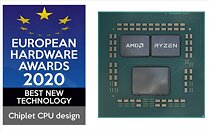
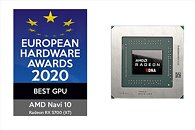
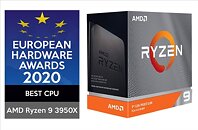
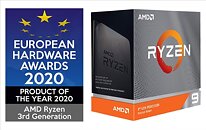
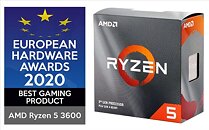
9 Comments on European Hardware Awards Announced; AMD CPU and GPU Division Wins Big
Plus it's trolling and not even a good one.
First of all, are we forgetting the (in my opinion, insulting) price gouging that was the "Un-super sized" Turing? And that it was only because of Navi that they lowered prices/gave the super refresh, which just brought Turing to where it SHOULD have been in the beginning with respect to value/price : performance. Also, the 5700xt is quantifiably a better value (in that you literally receive more FPS per dollar spent) than the 2070 super, which is about 7-10% faster than the 5700xt, but 25% more expensive [at best]. Meanwhile, the 2060 super is the same price as the 5700xt while being slower. And it's more than valid to point out that at the mainstream price segments, Ray tracing features could be fairly argued to not even be applicable as the performance cost is either difficult to justify or cannot even be born due to the lack of graphical power itself.
In terms of more innovation, yes, Turing introduced Ray tracing, but for all intents and purposes that was actually only a worthwhile experience on the most expensive and least owned Turing videocards while DLSS, it can be argued, isn't widely implemented to the extent necessary to deem it as a clear advantage in Turing's favor for the overwhelming majority of Turing owners (e.g. 2060S and down) .
Let me end by saying: I'm just playing devil's advocate here and postulating what these reviewers could have considered, so please don't respond with an attack aimed at me personally. All I'm saying is, it's not nearly the "landslide victory" for Turing that you might be imagining and that much more than frame rates were probably considered. I'm sure these reviewers or the committee that decided on these awards considered the consumer's ENTIRE experience and the ENTIRE picture with respect to which hardware gave the most to the consumer for the money spent, and which hardware provided the greatest benefit to the MOST consumers (and perhaps something like the fact that Navi drove the price down on Turing by providing meaning competition, could have been considered in this)... meaning the impressive performance of a halo product, like the 2080ti, isn't weighted as heavily as a product in the mainstream segments... This is a more "holistic" assessment, which I think is preferable as what makes a truly great piece of hardware is comprised by far more than just benchmarks and performance. In my personal opinion, a great piece of hardware not only delivers performance, it democratizes that performance by delivering it at a price that makes it obtainable to a previously unprecedented amount of people (like how Ryzen CPUs delivered more multithreaded performance to more people than ever before).
All of that said I think that the key advantage of AMD's Navi 10 design is simply the standpoint that it'll work great on older titles with big benefits relative to the competition and still work great in future titles overall and especially true in games that don't leverage Nvidia new IP design differences which we'll see much less of overall in the first place in relative gaming terms. We got a good solid decade of older titles that are still very playable and a bunch could be revisited and played today at the highest image quality settings and at higher resolutions and very enjoyable experiences right now today in those scenario's which are still much more likely than DLSS/RTX/Mesh Shading usage overall now and into the future makes the Navi 10 probably the better overall buy from a collective gaming experience.
I've brought up the argument before that continuing with stronger rasterization emphasis is quite a bit more important in the grand scheme of things right now for GPU's. I don't think we've reached a point where RTRT is at a real convergence point as of yet the new consoles could help in that area though and change things given the wider scale reach of them. I think even in the case of the consoles we are going to see rather limited progressive upside on the ray tracing adoption and development front with current hardware available. I think we're probably two more generations away from it taking off to a overall significant extent perhaps one if you consider CF/SLI usage. I just don't believe we are there yet with GPU performance with all the denoise passes required to make RTRT a passable experience and without taking too enormous a performance hit. It's going to be a big hit no matter what when it comes to performance relative to resolution. It remains to be seen if it's worth it at this stage for the limited GPU resources available and Cyperpunk 2077 might be a indicator of that as well if the geometry had to be lowered just to make RTRT presentable enough that's a indication of clear trade off itself. Is it worth faking the shadows and lighting to degrade the geometry detail or are we better off improving geometric detail and optimized fake lighting and shadows!!? We can still improve the fake and optimized IQ detail with higher poly objects and better AA/AO quality and things like that.
I'm looking forward to your next post for the next laugh and the entertaining responses from others.